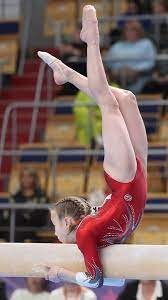In a world filled with screens, fast-paced routines, and short attention spans, gymnastics offers kids something refreshingly different—balance, focus, and fun. It’s not just flips and handstands; gymnastics for kids lays the groundwork for essential life skills like perseverance, confidence, and working well with others. Whether your child’s aiming for the Olympics or just looking for a way to stay active, gymnastics can be a game-changer.
Why Gymnastics for Kids Builds Strong Foundations Early
From their first cartwheel to mastering a beam routine, children grow physically and mentally through gymnastics. The sport develops core strength, flexibility, and motor coordination from a young age. But just as importantly, it encourages consistency, routine, and goal-setting—skills they’ll carry into school, relationships, and beyond.
Each lesson is a structured mix of challenge and repetition. Kids learn that improvement doesn’t happen overnight, but with patience and effort, they can achieve remarkable things. Coaches play a vital role in helping children set realistic goals and gradually progress at their own pace. These are lessons that spill over into homework, friendships, and even how they approach other sports like gymnastics for kids.
From Somersaults to Self-Belief
Gymnastics is one of the few sports that welcomes children as young as two or three years old. At that age, classes are less about technique and more about developing confidence in movement. Climbing, rolling, jumping—they’re all part of learning how the body works in space.
As kids grow older, the structure becomes more disciplined. They learn how to follow instructions, wait their turn, and focus under pressure. These behavioural patterns aren’t just useful in class. They reflect in how a child interacts in group projects, handles classroom expectations, and behaves in team sports like gymnastics for kids.
And then there’s resilience. Not every jump lands perfectly. But kids discover that falling isn’t failure—it’s part of progress. That mindset shift, from frustration to grit, is perhaps the most powerful gift gymnastics can give.
Teamwork in an Individual Sport
At first glance, gymnastics may seem like a solo sport—each child with their own routine, their own moment on the mat. But look closer and you’ll see something else. Camaraderie builds in the background. Teammates cheer each other on during practice and competitions. High-fives after a successful vault, encouragement after a wobble on the beam—it’s peer support in its purest form.
Group routines and synchronised tumbling are another way kids learn to collaborate and trust one another. Timing, awareness, and responsibility become second nature, preparing them for situations in school, group activities, or team-based environments like gymnastics for kids.
Plus, the nature of gymnastics means that athletes often train together over several years. Friendships form through shared experiences, creating a sense of belonging that’s especially valuable during adolescence.
Discipline and Focus Off the Mat
A regular gymnastics schedule teaches children how to manage time and energy. Getting to training, warming up, practising, cooling down—it’s a full cycle that requires dedication and consistency. These habits translate well into managing homework, chores, and responsibilities at home.
Focus is another massive win. With every apparatus comes a unique challenge. Whether it’s balancing on a beam or completing a vault, distractions can lead to mistakes. So kids learn to tune in, block out noise, and give their full attention to the task at hand.
That ability to concentrate deeply is increasingly rare and valuable in a world full of digital interruptions. And there’s strong research backing the link between structured physical activity like gymnastics and improved cognitive performance in school-aged children.
Keeping It Fun and Safe
For all its benefits, gymnastics must be introduced with the right mix of safety and enjoyment. Reputable programs focus on age-appropriate progressions. That means skills are built step-by-step, ensuring that a child is physically and emotionally ready before moving to more advanced techniques.
Parents should look for coaches who are not just qualified, but who prioritise positive reinforcement over pressure. A healthy gymnastics environment should celebrate small wins, encourage effort, and remind kids that it’s okay to try again.
Remember, it’s not about creating elite athletes. It’s about giving kids the space to move, grow, and feel proud of what their bodies can do.
Final Thoughts
Gymnastics offers far more than physical skills—it fosters emotional growth, self-discipline, and a deep sense of achievement. From toddlers learning to tumble to teens tackling complex routines, every stage of the journey adds something valuable.
If you’re looking for an activity that builds life skills as much as muscle, gymnastics for kids might be the right fit. It helps kids grow in all the ways that matter—on the mat, at school, and in life.

